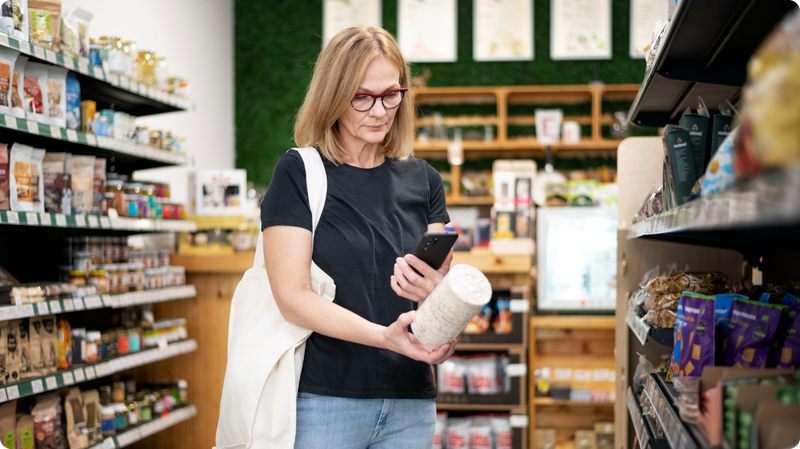
At the turn of the year, summaries and forecasts are always in high demand. On the one hand, we rejoice that another clean slate waits ahead and recent mistakes remain in the previous year's reports, providing an opportunity for an impressive rebound – on the other hand, we try to keep our wrong decisions in the back of our minds so that under no circumstances should we repeat them in the next showdown.
But this perception of the passage of years means that broader trends and market transformations can elude us. They are treacherous because they occur over a much longer time frame and are easy to miss – but they are also the sum of individual choices made by both consumers and the decision-makers trying to meet their needs.
With the right level of attentiveness, as more and more quarters pass, we can position ourselves in such a way as to maximize the chances that the winds of change will blow in our sails. Not only in 2024, but also in the long term, when certain events of 2024 will be remembered as signals that the vast majority missed.

And there is a lot to fight for. After a long period of decline, in October 2023 Polish trade recorded a year-on-year increase of 2.8%, according to the Central Statistical Office. While some industries like books, furniture and home appliances are still in a downward trend, trade as a whole has finally seen a rebound. Together with decelerating inflation, this could bode well for retailers. The development of e-commerce promises to be particularly interesting. Its share of total Polish trade increased by almost 10% (from 8.3% to 9%) between September and October 2023. According to PMR, the value of e-commerce in Poland is expected to reach PLN 141.3 billion in 2027.
To give yourself the best chance of success in e-commerce, it is of course worthwhile to actively track and implement technologies that improve the customer experience and motivate users to make purchases more often and with larger cart sizes. But the relationship between technology and e-commerce is no longer some separate entity. In this day and age, when consumers, not just the youngest, are reaching for their smartphones up to 352 times a day (according to Asturion research), traditional commerce also looks very different from even a decade ago.

For the most part, the same buildings with the same physical stores with clothing, electronics or books still stand, but the consumers walking between the shelves have little in common with those from before the mobile revolution. The modern customer often goes to the store as if it were a showroom, looking at and comparing products, taking pictures of them with their smartphones to note them down, and only making a purchase from the comfort of their home, using their favorite device. At the same time, it is just as common to see consumers making a purchase in a physical store, but first checking reviews on their phone or consulting friends or family who are not present.
Technological solutions created according to omnichannel concepts can drive sales through traditional channels in ways that decision-makers are sometimes unaware of, and this is especially crucial right now, when interest in shopping malls is dropping so sharply – according to a Proxi.cloud report, over 22% fewer customers visited them in November 2023 than in the same month of 2022.
Having a so-called single customer view in the organization, i.e. aggregated data on every customer as an individual, it is possible to see that the user in question added items to the shopping cart, using it as a wish list, and then went to the nearest traditional store and decided to buy most of them. Without a well thought-out omnichannel strategy and data management maturity, you end up with completely wrong interpretations of the information you have, and may consequently make decisions about further development that are inconsistent with reality.
Over time, the importance of traditional stores as shopping outlets may diminish quite a bit. New solutions available from any smartphone allow us to quickly visualize how new clothing items will look on a particular body type or how a new shelving unit will look in our room. As more and more retailers implement technologies such as augmented reality and virtual fitting rooms, the importance of product uncertainty, which discourages some consumers from using ecommerce, will diminish even further.

We can already see that more and more concepts are emerging to meet the needs of the modern customer in new ways. Provide a multidimensional experience of relating to the brand and a way to spend leisure time, rather than simply being a point of exchange of goods. In Warsaw, for example, we already have the Fabryka Norblin or the Elektrownia Powiśle, where entertainment and nightlife are combined with small touchpoints providing opportunities of contact with numerous brands.
Meanwhile, the Dutch beauty and wellness retailer Rituals, to celebrate the brand's 20th anniversary, has opened a flagship store in Amsterdam that combines a sales space with a company-run spa, meditation center and restaurant. In the regular locations, employees act as advisors who, with the digital tools they have available, can quickly order the products a customer is looking for to be delivered to their house, even if they are not currently in stock. In London, UNIQLO has opened a café with a beautiful terrace on the top floor of one of its stores, where you can try Matcha specially imported from Japan.
Stores are increasingly being transformed into showrooms, places of inspiration. Over time, an increasing proportion of real sales may be delivered from suburban warehouses, which will greatly simplify logistics and change companies' need to lease real estate in expensive centers.
What goes on behind the scenes from a consumer’s perspective – logistics, operations, negotiations with suppliers, but also choices on the available offering – is also taking on a new form thanks to technology. Trend-tracking through search engines makes it possible to plan the stocking of seasonal products more precisely than ever, while data analysis and real-time recommendations calculated by artificial intelligence optimize the activities performed by employees at every stage of the supply chain.

In turn, the increasing digitalization of processes throughout the value chain is, paradoxically, leading through automation to a heightened focus on the individual. We are talking about the personalization of not only the offer aimed at the end customer, but also, for example, the approach to negotiations with suppliers. It used to be that companies couldn't afford decent preparation for talks with small partners, and many matters were handled with repetitive contract templates. Today, the support of artificial intelligence is already able to minimize the input of human analysis to such an extent that now the approach to even smaller negotiations can be individualized, thus getting rid of inefficiencies.
For the time being, this type of solution is only being tested by the giants with the most ambitious approach to innovation, but with its increasing prevalence, ignoring the topic will always put us slightly behind the competition that is aggressively optimizing.
Personalization of customer communications, on the other hand, is an extensive topic that is talked about a lot, but in practice often remains implemented at a very cursory level. The consumer of the future knows what they want, and expect brands to know it too, since they collect data on them anyway. They receive the fact that a company addresses them by their name with an ironic smile, if immediately afterwards it offers to buy him a vacuum cleaner, which they had already purchased two weeks earlier at that very location.

Yes, data is the oil of the 21st century, this quote gets truer every year, and it is true in retail as well. But, like oil, and unlike gold with its mostly speculative and faith-based value – data is valuable because of its real, practical application. If they are only used to hold them somewhere or to fuel inefficient machinery from a few technology cycles ago, they generate more costs and logistical headaches than profits.
To find a place in the heart of the customer of the future, you need a forward-thinking strategy that is effectively implemented to do so. With a focus on results, in an iterative manner, and taking into account customer needs as declared as read from real behavior. The enormity of technological opportunities and the pace of change we see in the market can overwhelm. For many companies, however, tremendous value can already be added by working at the grassroots, working to get a truly reflective picture of their own performance through smart data management policies.
Awareness of where we are allows both a more realistic determination of where we want to be in a few years, and an honest, black-and-white assessment of the effects of ongoing experiments or implemented solutions. So that the sum of individual decisions ultimately adds up to a competitive advantage and a secure place at the top of the pile, including in the future, which we inevitably strive for from quarter to quarter.